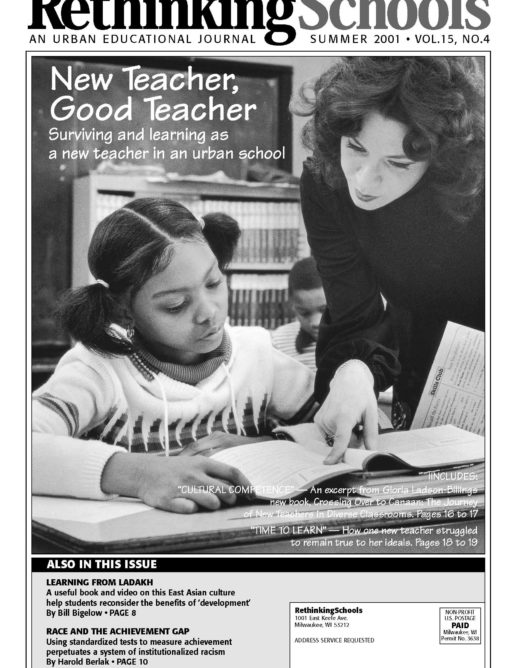Preview of Article:
Race and the Achievement Gap
Using standardized tests to measure achievement perpetuates a system of institutionalized racism and lends the cloak of science to discriminatory practices.
Over the years, the major reasons given for the claimed superior attainments of whites in cultural, artistic, and academic endeavors were overtly racist. It was said that the explanation lay in the superior genes of white northern European, Anglo-Americans. As the social sciences developed in the latter years of the 19th and the 20th centuries, “scientific” tracts defending white supremacy appeared with regularity. By the 1930’s, the eugenics movement (which posited a biological basis for the superiority of whites) managed to gain a foothold in North American universities. And, it is relevant to add, all the leaders of this overtly racist movement were the leaders of the newly emerging field of scientific mental measurement. Many were the same men who testified before Congress in the early 1920’s and lent scientific credence to the racist immigration exclusion acts which barred or greatly restricted immigration from Asia, Latin America, and southern and eastern Europe. The eugenics movement was considered a respectable academic discipline until it was discredited following the defeat of the Third Reich and the immensity of the crimes committed in the name of Nordic racial purity.
In 1969, the scientific case for racism was revived by an article published in the Harvard Educational Review by University of California-Berkeley education professor Arthur Jensen. Based on his statistical analysis of IQ test scores, he concluded that African Americans were genetically inferior to whites in general intelligence. His racist thesis was widely disseminated and discussed in the popular press and in respectable academic and policy circles. In time, Jensen’s conclusions were thoroughly discredited by a spate of books and articles. In 1994, once again using standardized test data, Charles Murray and Richard Hernstein wrote The Bell Curve and claimed to have proven that the inferior place of Black and brown people in the social, political, and economic order was rooted in biology. The arguments for the genetic superiority of the white race were again dismembered and discredited by many geneticists and biologists.
Recently a more subtle form of “scientific” racism has gained some respectability. The inferiority of the Black and brown races is now said to lie not necessarily in genetics but in culture and history. This more quietly spoken academic version of the master-race ideology has also been thoroughly dismantled, yet racist explanations for the race gap persist.
Once all “scientific” arguments supporting racism are dismissed, how is the ever-present gap in academic school performance to be explained? Numerous social and behavioral scientists have addressed this question.
A statistical study by Professor Samuel Meyers Jr. at the Roy Wilkins Center for Human Relations and Social Justice at the University of Minnesota sought to determine whether poverty was a primary cause of the poor performance of Black students on the Minnesota Basic Standards Test. Passing this test was scheduled to become a prerequisite for a high school diploma in 2000. In a 1996 trial run in Minneapolis, 75 percent of African-American students failed the math test, and 79 percent failed in reading, compared to 26 percent and 42 percent respectively for whites.</p

